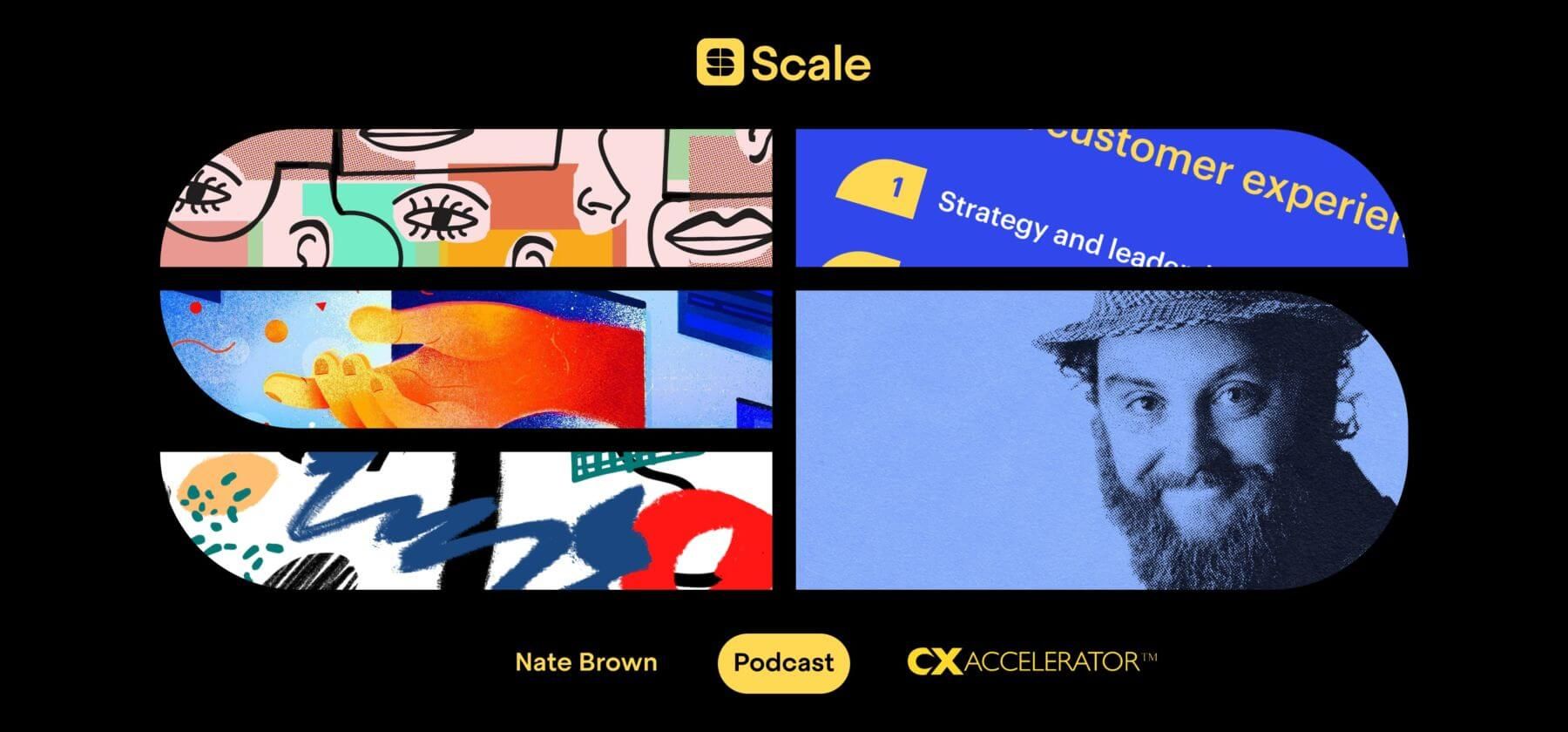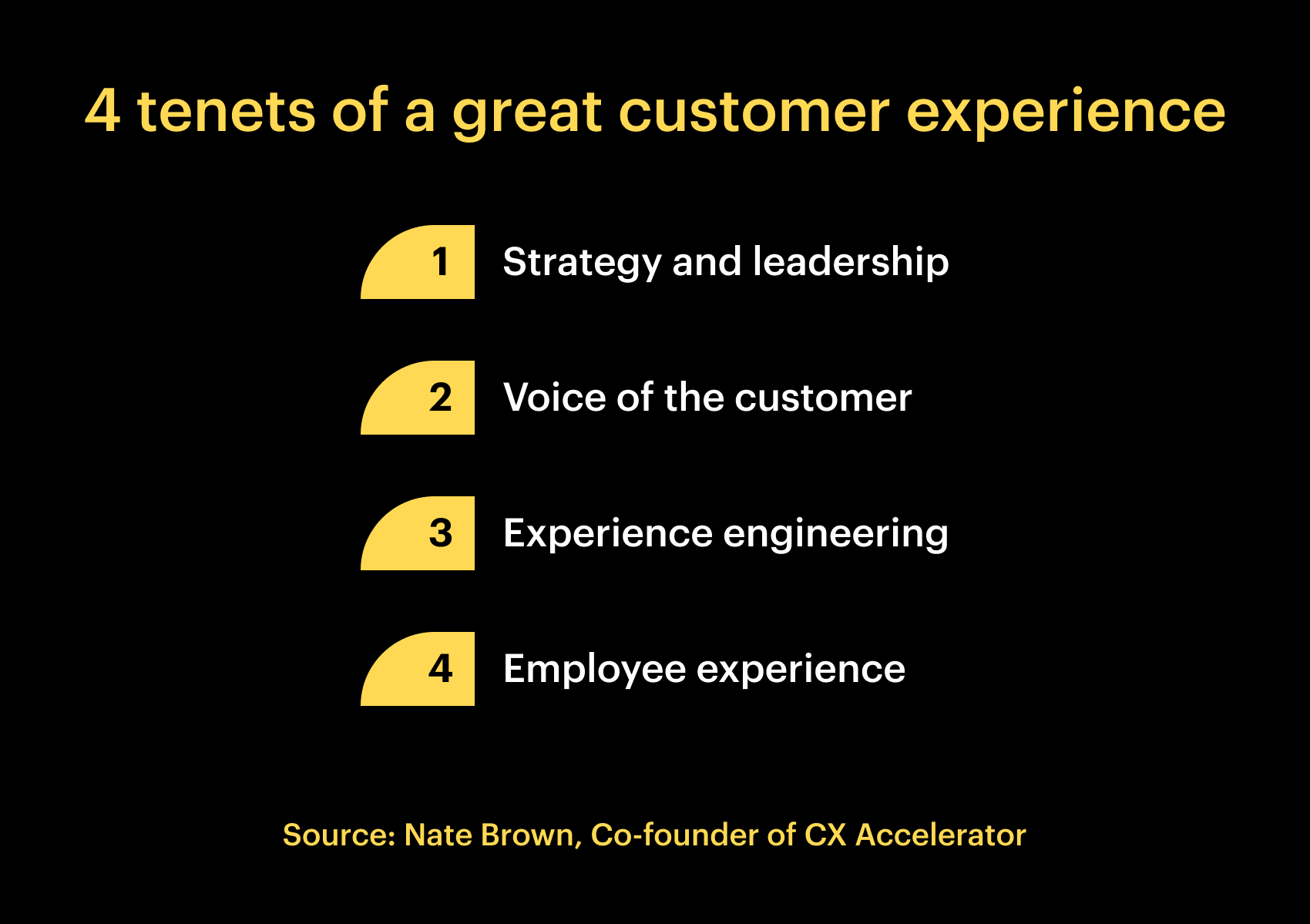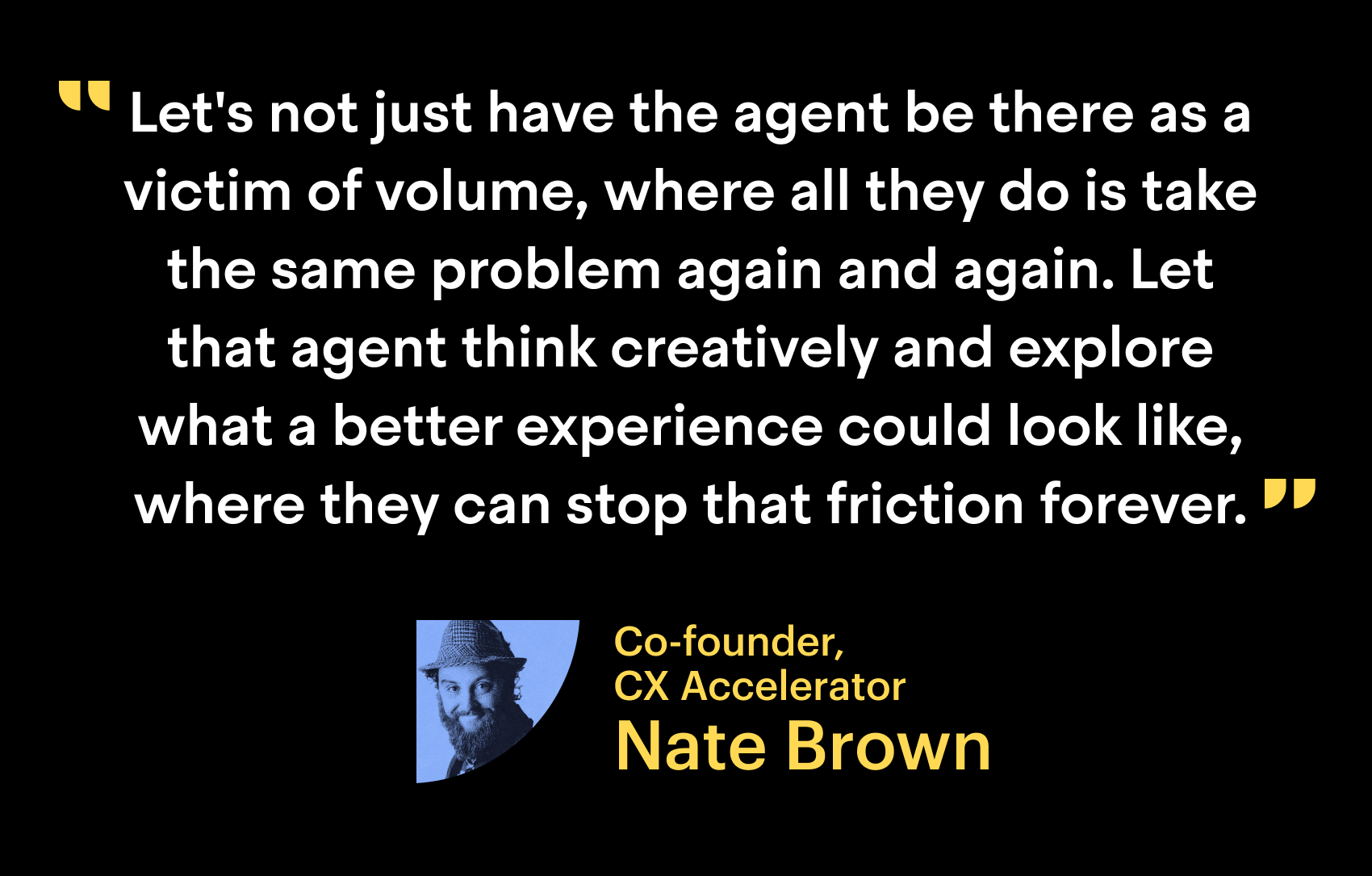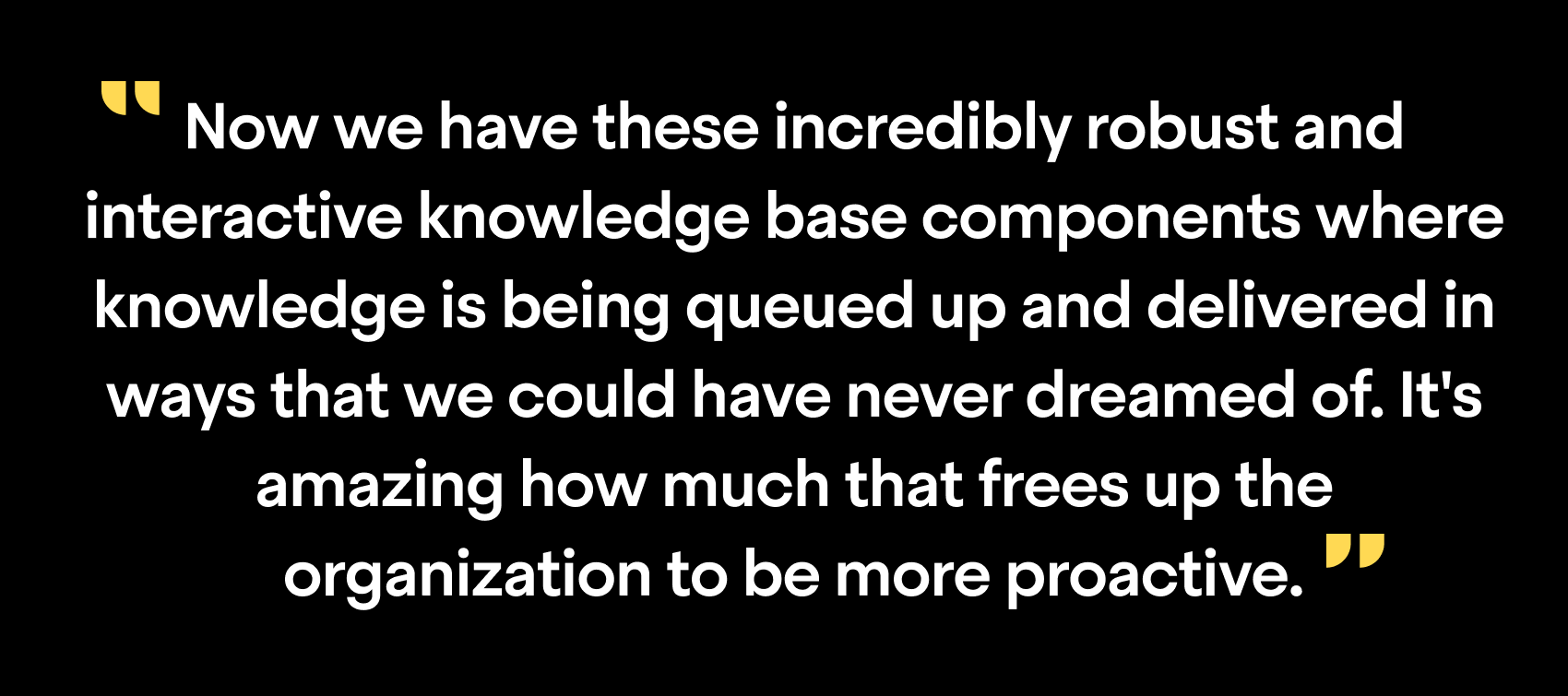
Nate Brown on why proactive CX is the next competitive battleground
Back in 1997, when Apple was struggling for survival, Steve Jobs answered a critical question with a typically insightful response. “One of the things I’ve always found is that you’ve got to start with the customer experience…What incredible benefits can we give to the customer?”
Today, numerous studies echo this sentiment: a recent report from Forrester found that brands with a superior customer experience bring in 5.7 times more revenue than their competitors. And a recent study from Deloitte found that two-thirds of customers will switch brands entirely due to a poor customer experience.
Customer expectations are higher than ever, and this acts as a forcing function, inspiring companies to think about their customers’ entire journey from acquisition to onboarding and support. Simply fixing something that’s broken just won’t cut it anymore. Today’s customers expect a more human experience from companies to fulfill their needs with speed and ease.
According to Nate Brown, the companies that move from reactive customer service to a more holistic, proactive customer experience (CX) approach will be the ones that ultimately survive and thrive. As the Chief Experience Officer at Officium Labs and the co-founder of CX Accelerator, a virtual community for customer experience professionals, Nate has over a decade’s experience helping business leaders and employees create powerful end-to-end customer journeys. As he puts it:

In the latest episode in our Scale series, Intercom’s Dee Reddy caught up with Nate to learn how to tune in to the voice of the customer, and how a holistic approach to customer experience can be the ultimate brand differentiator.
This is Scale, Intercom’s podcast series on driving business growth through customer relationships. If you enjoy the conversation and don’t want to miss future episodes, just hit subscribe on iTunes, stream on Spotify, or grab the RSS feed in your player of choice.
Taking a holistic approach to CX
Creating a half-baked customer journey and calling it a day is not a recipe for loyal customers. In fact, despite the many opportunities CX affords, studies show that 93% of CX initiatives are actually failing. Paul Hagen, a former CX Analyst at Forrester, says that a breakdown in CX often occurs for one of two reasons – a lack of strategy or poor execution that fails to close the loop from customer feedback to action.
Nate agrees, believing that a great customer experience requires taking a holistic, strategic approach that encompasses a wide range of factors – from strategy and leadership to the voice of the customer, experience engineering, and employee experience. In fact, according to Nate, these are the four foundational tenets to success:

Let’s take a look at each tenet:
1. Strategy and leadership
As a coach, one of the questions that Nate gets asked most often is where customer experience belongs – and rightfully so. If you anchor all your efforts to a part of the organization where you can’t actually influence change, your initiatives are doomed to fail. If you want to succeed, you’ll need representation and leadership buy-in from every major department in your business – or as Nate puts it: a CX change coalition.
2. Voice of the customer
Once you’ve gathered your stakeholders, you need the right customer data and insights to fuel an effective, empathetic CX strategy. As Nate says:
“Let’s stop assuming we know what our customers need and start making changes before we get those insights locked in.”
According to Nate, actively listening to and actioning on the voice of the customer is the cornerstone of an effective strategy. This involves collecting, analyzing, and combining all the ways in which a customer shares their feedback with you: from the age-old NPS survey to review sites, tweets, Facebook messages, qualitative customer satisfaction surveys, and more. Once you understand your customers’ priorities, expectations, and pain points, you can design a personal, contextual customer journey that helps them seamlessly achieve their version of success in a delightful way, at every touchpoint.
3. Experience engineering
Tenet three is experience engineering, where you tap into a strong change management methodology to improve the customer experience and mobilize the organization towards a common goal of making the customer’s life better.
Change needs to happen at every level – from the overarching company culture to the everyday processes. The trick, Nate believes, lies not in radical, overnight changes. Rather, it hinges on uniting the organization around the same language and then tapping into existing momentum and strategies to drive things forward.
4. Employee experience
Finally, Nate says that all of the other tenets rest and rely on the quality of the employee experience. Employees are, after all, your internal customers. You can’t create amazing experiences for your customers without first designing a world-class experience for your employees – one that makes them feel valued, engaged, and sets them up for success. Here’s Nate:
“As Annette Franz would say, ‘A CX change is culture change.’ We can’t change the thoughts and mentalities and behaviors we have towards our customers without first looking in ourselves and creating the type of experience that we can then mirror, that we can give as a gift to our customers from an authentic employee experience that is first created.”
Erasing friction points forever with proactive CX
In the old days, customer service was solely seen as the company’s clean-up crew. Every time a problem in an organization impacted the customer, it was up to support agents to swoop in and clean up the mess.
But this reactive way of supporting customers is outdated – broken even. Leaving customers waiting for hours or even days to get the help they need can cause dissatisfaction, distrust, and ultimately cost you their business and loyalty. Not everyone who’s dissatisfied with your service will bother to complain either. More often than not, they’ll just cancel their subscription or stop buying your products, before turning to a competitor who can better satisfy their needs.
This approach also puts a lot of strain on your support agents. They’ll sit at their desks putting out fires all day – picking up calls from annoyed customers, answering emotionally-charged messages, and dealing with hundreds of simple, repetitive queries, like: “Where’s my package?” Ultimately, this eats into their time and headspace that would be better served helping customers achieve success with your product or service.

There’s a better way: according to Nate, creating a proactive customer experience is the golden ticket. This involves pre-emptively resolving customer questions before they even arise, so you can stop common frictions from occurring forever. Not only does this free your team up with more time to solve complex issues, it’s also a huge competitive advantage – according to a recent Microsoft report, 68% of customers have a more favorable view of brands that contact them with proactive customer service.
By investing in proactive support, you can erase common issues altogether. Nate says that strong investment requires providing your team with the necessary tools and giving them agency to be a part of the solution.
Even better, this frees up your agents to think about the customer journey on a higher, more strategic level – identifying not only the touchpoints where they can lessen friction for customers, but also empowering them to identify opportunities to proactively educate and delight customers. As Nate puts it:

The customer voice gets louder
Not too long ago, the only way you could find out how customers felt about your product or service was to gather focus groups or send out surveys – a time-consuming and sometimes inefficient approach. Today, with the emergence of new, increasingly intelligent customer voice tools you can take all of these previously untapped customer transactions and get insights on how customers really feel about your product or service, at scale.
For Nate, when it comes to understanding the voice of the customer, sentiment analysis powered by AI is one of the most useful tools in the CX stack:

Nate adds:
“Now we can get an automated form of customer sentiment on a phone call, on a live chat interaction, on a self-service portal navigation. We can take that experience, we can look at it very clearly and transparently and be able to see: did the customer feel great about this experience or was there friction there that resulted in them not being able to achieve their objective?”
According to Nate, the future of CX will see the voice of the customer getting even louder. And this will be powered by the emergence of new, more sophisticated, AI-powered tools.
Even today, we can practically reach into the hearts and minds of our customers. It’s up to us to use the tools and knowledge at our disposal to interact with them in more meaningful ways that help them achieve their version of success. The path towards great CX is not always an easy one, but as Nate would say, it’s a marathon, not a sprint. Ultimately, it’s a marathon well worth running – one that boosts customer satisfaction, loyalty, and retention over the long term.






